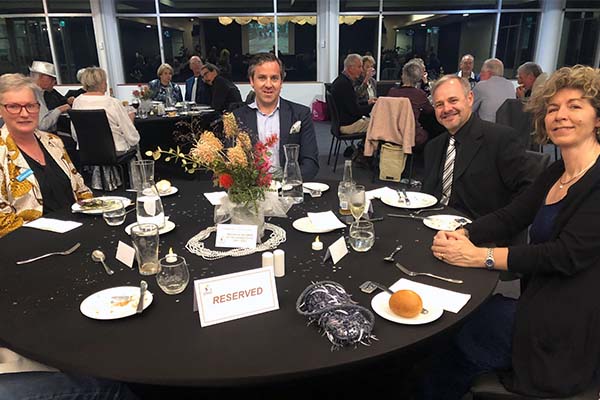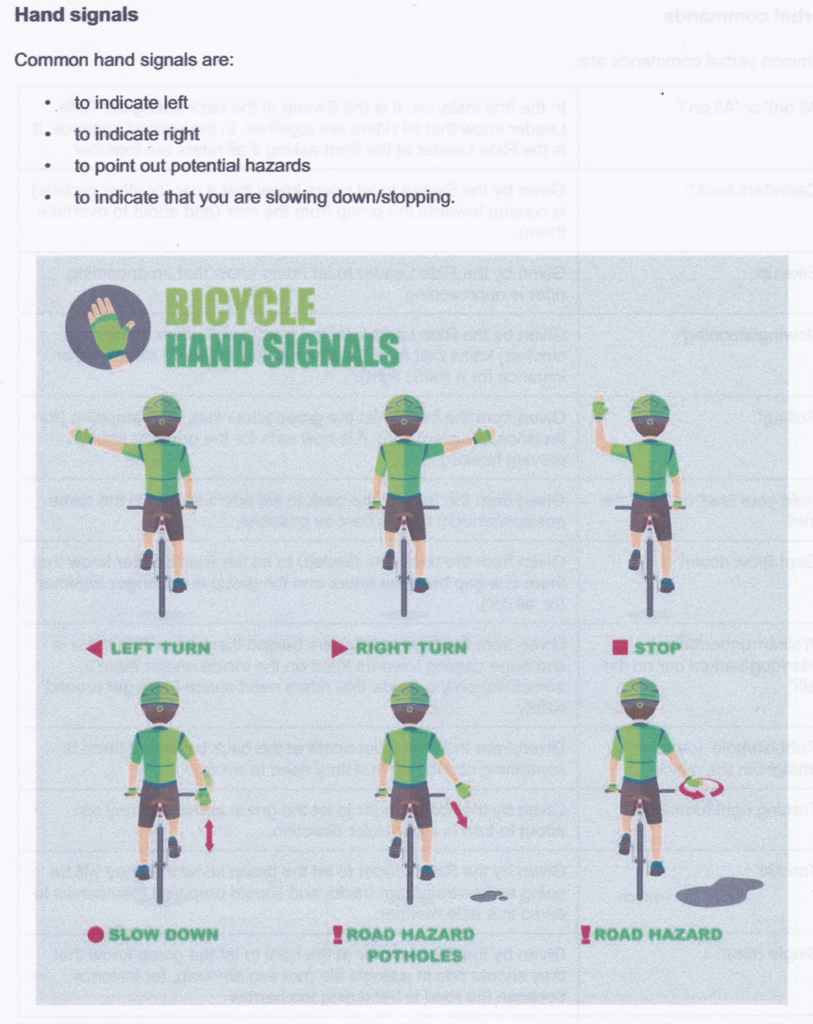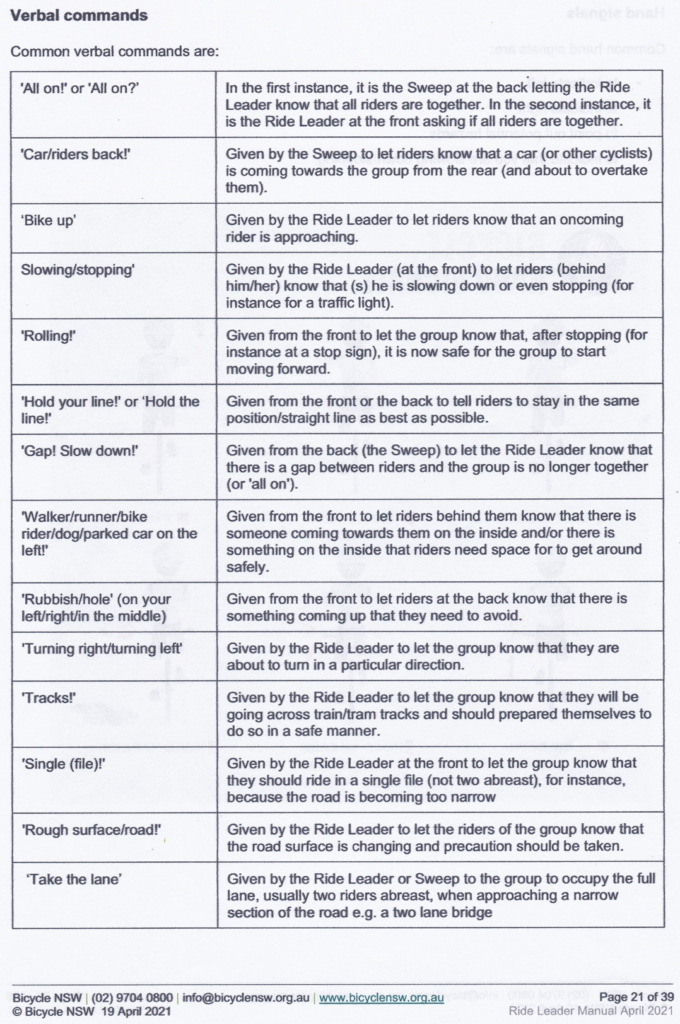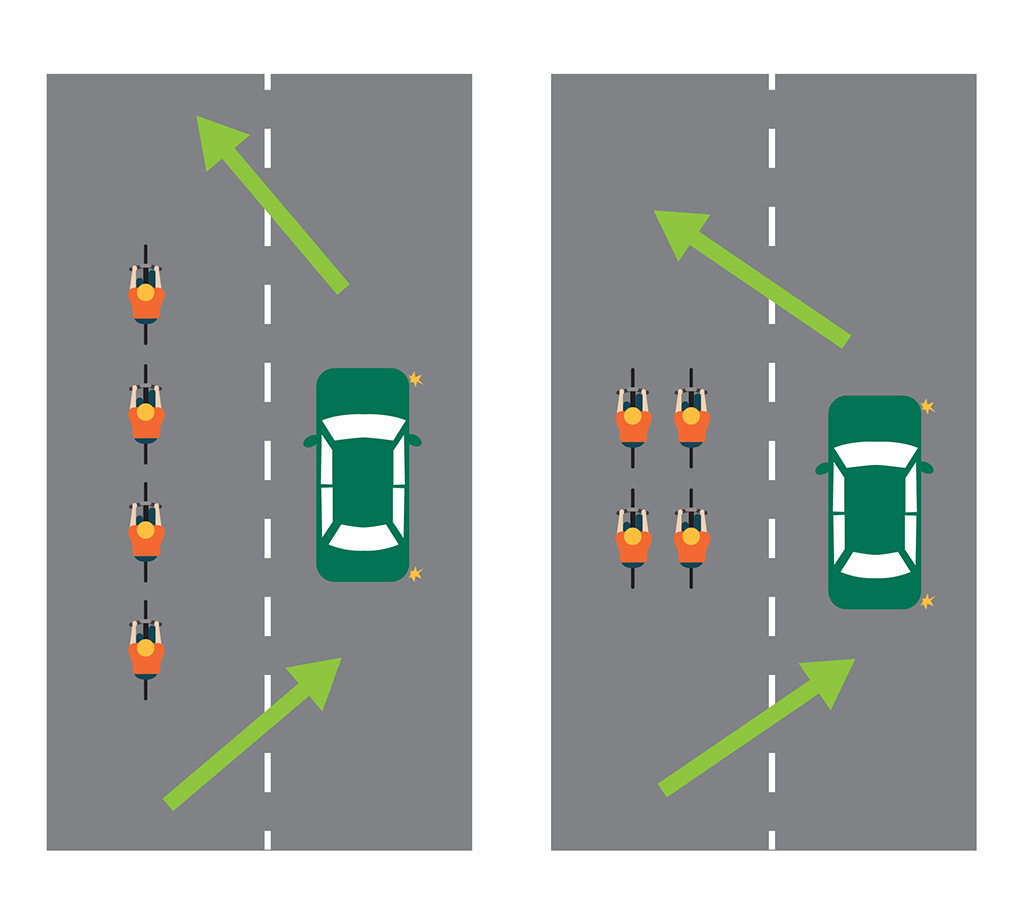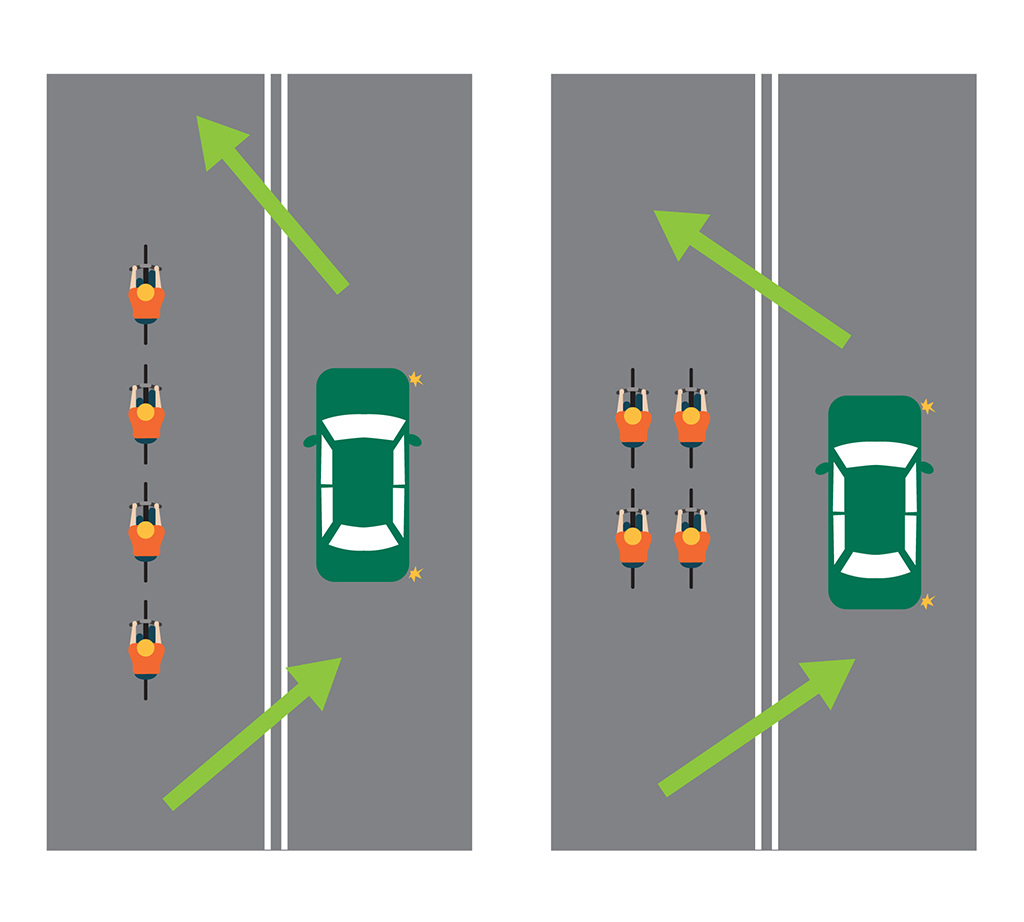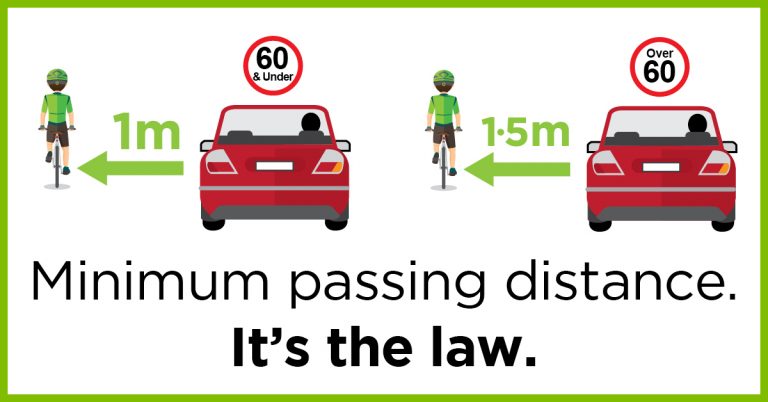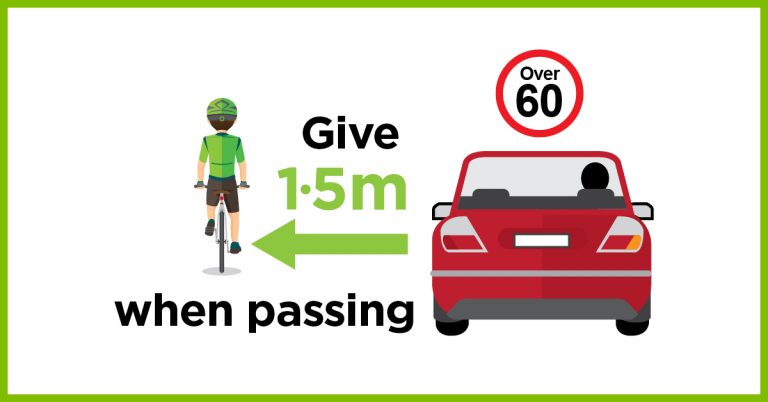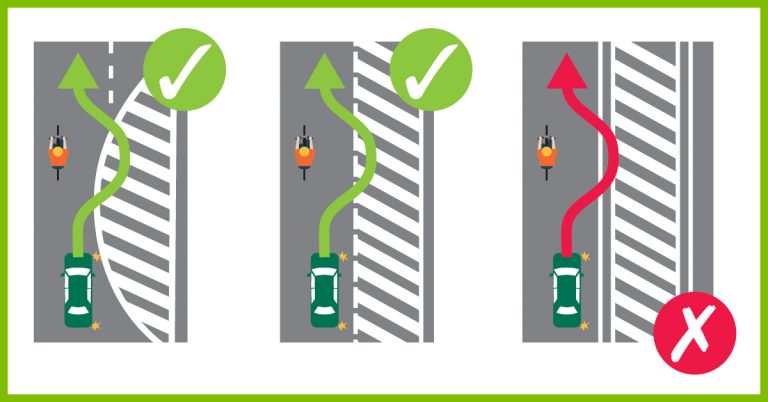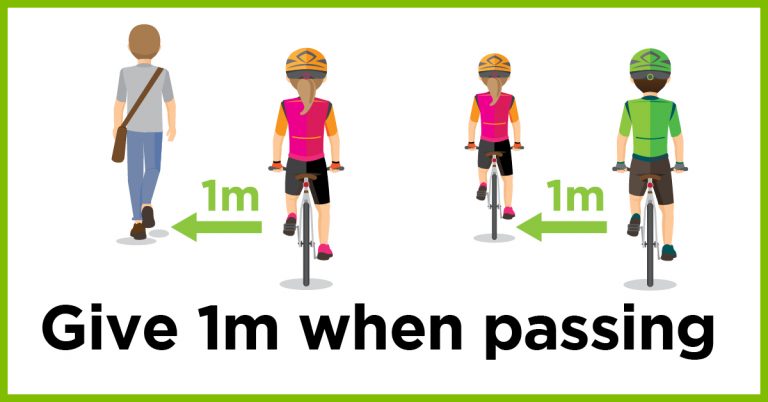Cycling manufacturer Shimano issues global review of its cranksets after widespread reports of malfunction and injury
By Jade Toomey
Help keep family & friends informed by sharing this article
abc.net.au/news/act-cycling-manufacturer-shimano-issues-global-review-crankset/102918296
Link copied
Cycling manufacturer Shimano has issued a global review of one of its most prolific bike parts after widespread reports of malfunction and injury.
Key points:
- Bicycle part manufacturer Shimano has issued a global review of its cranksets
- There have been long-running complaints about the crank arm splitting from the body of the bike, causing crash risks
- The review was only launched after an investigation in the United States found the fault potentially contributed to a serious accident
At least 2.8 million cranksets globally are set to be the subject of an inspection and review program launched this week by Shimano, the largest manufacturer of bicycle components in the world.
It follows investigations by product safety agencies in the United States and the European Union after more than 4,500 complaints were made in just over a decade about the cranksets failing riders.
The crankset, or ‘crank’, is the part that connects a bike’s chain to the arm of its pedal.
But Shimano’s Hollowtech II model has become notorious for problems with its adhesion corroding over time, forcing the crank arm to split when pressure is applied to the pedal.
Canberra cyclist Henry Strong owns two sets of the affected cranks, and said it was frightening to be using potentially faulty equipment while cycling at high speeds.
“The feeling that you might have faulty equipment when you’re doing 75 or 80 kilometres [per hour], that’s quite terrifying,” he said.
“When you’re cycling, something going wrong could, of course, be fatal.”
The issue has been the subject of long-running online forums and dedicated social media pages.
Canberra bike mechanic Stuart Carling said the faulty equipment should have been recognised earlier.
“I don’t think I’ve seen [a recall] like this in this industry, it’s huge, it affects potentially thousands and thousands of people,” he said.
“This is something that should have been recognised years ago.”
Mr Carling counted eight bikes affected by the problem in his small bike workshop in Canberra, even though they were originally being repaired for different issues.
Shimano said it had not been able to determine the cause of the issue, but had now acted on the complaints after a US Product Safety Commission investigation found the fault could have contributed to a serious accident involving an American rider.
“We are deeply sorry that any riders have been affected by this issue,” a Shimano spokesperson said.
Shimano’s Australian branch declined to reveal how many complaints it had received about the issue, and how many units it anticipated were affected in Australia.
The company said it would launch an app in October to facilitate its replacements.
“But it’s too little too late, if you ask me,” Mr Strong said.
“You’ve already had thousands of people that have had incidents, many broken bones, some people hospitalised.
“It appears as though they’ve finally come to the point where they have to acknowledge it, but I think they should have done it a lot sooner.”
Mr Strong, who competes in triathlons, will not be able to use his bike without a replacement before the first race of the upcoming season in two weeks.
“I don’t feel particularly safe using this equipment,” he said.
“We trust that the equipment we buy and invest in will support us, and will be reliable and meet a certain standard.
“I think Shimano has failed to meet that standard by continuing to manufacture and sell faulty equipment for close to 11 years.”
Riders are directed to get their bike inspected at a Shimano dealer, who will decide if it needs to be replaced.
Mr Carling said he was bracing for an influx, but questions about who would pay to fix the issue remained.
“I don’t believe that should be the customer, it is probably going to have to fall back on Shimano, but how are they going to do that?” Mr Carling asked.
A spokesperson for the Australian Competition & Consumer Commission (ACCC) said it was aware of the recall in the US and EU, and that Shimano Australia had commenced an inspection and replacement program for affected cranksets.
“If a supplier becomes aware of a death or serious injury/illness caused by a product they supply, the supplier must make a mandatory report through the Product Safety Australia website,” the spokesperson said.
Shoalhaven Bicycle User Group 25th Anniversary Silver Celebration
15% Discount on Bicycle NSW Membership
All members of a Bicycle NSW affiliated BUGs, including Shoalhaven BUG, are eligible for the BUG Membership discount on joining or renewing membership. To receive the discount a discount code is required when purchasing membership on the BNSW website. The discount code for Shoalhaven BUG can be obtained by contacting the Shoalhaven BUG Membership Secretary. BUG members can join online here and when they enter the discount code on the checkout page, the discount will be applied automatically. Alternatively call Bicycle NSW on 02 9704 0800 for more information about their Memberships and to join over the phone.
Group Riding Hand Signals and Verbal Commands
Tips for Group Riding from Bicycle NSW
HOME / BICYCLE NSW NEWS • COMMUNITY • SAFETY GUIDES
Riding in a group is an exciting experience and can lead to some amazing adventures! St George BUG has come up with some helpful hints to ensure everyone remains safe and has a fun time.
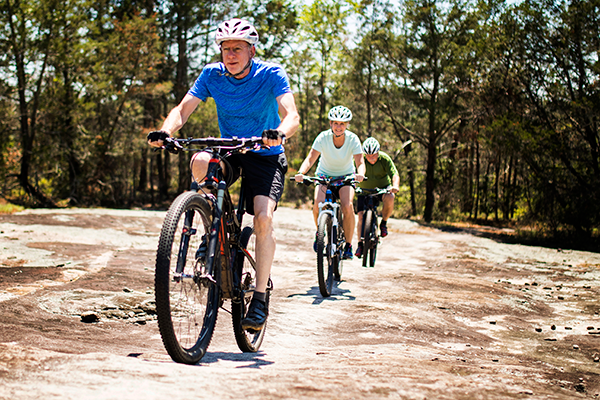
Equipment
- Your bicycle should be in good working order, with tyres pumped and chain oiled.
- Do not ride if your brakes are defective.
- You must wear a helmet – it’s the law.
- Take a full drink bottle of water and be sure to drink regularly.
- Wear suitable clothing – a brightly coloured top is advisable.
- Carry a spare tube which is the correct fit for your tyre, a pump and tyre levers.
- If the ride is in the early morning or evening, make sure you have front and rear lights.
- A mirror on your handlebar or wrist is an advantage.
- A bell is very necessary when riding on shared cycle paths.
- Use sunscreen when appropriate – you’ll probably be out in the sun for a few hours.
Riding Etiquette
- If you haven’t ridden with a group before, let the group know, so they don’t ride too close to you.
- Listen carefully to the ride leader’s instructions at the start of the ride.
- Watch for hand signals from riders in front of you, e.g. left and right hand turns, slowing or stopping, debris or potholes on the road. The ride leader will show you the signals.
- Pass on the signals to the riders behind you, or call them out if you are unable to do them.
- Call out “bollard” when approaching one as you might block it from the vision of riders behind you.
- Keep to the left when riding, so others can pass you if necessary.
- If you pass a rider or walker, call out “passing”.
- When riding on a road single file is preferred. If the sweep calls out “car back”, it means a car needs to pass, so make sure you keep to the left in single file.
- When approaching a roundabout, check behind to see if the road is clear, then take the middle of the lane to go into the roundabout so you don’t get nudged to the side if a car tries to pass.
- Always stop for red lights even if the riders ahead have gone through. They will wait for you.
- Don’t shout abuse at pedestrians, cyclists or motorists or use rude gestures.
- Remember that pedestrians have right of way on most shared paths.
- If the group has stopped to wait for you, don’t ride up to the front of the group, but join the back of the group.
Avoiding Accidents
- Always move yourself and your bike to the left edge of the path when you stop. Not only does this avoid riders colliding with you, it also stops others who use the path from getting annoyed.
- Don’t swerve in and out of the group.
- Bollards come in all shapes and sizes. Watch out for them on shared paths, slow down and call out to riders behind you to alert them.
- When riding up onto a footpath or across a gutter, always approach at a right angle. If you approach side-on, your tyre might not get over the lip and your bike will stop suddenly.
- Look out for potholes and tree roots and always be on the alert for changes in the path or road surface. Concentrate on the path ahead.
- Watch out for bushes, tree branches or vines that encroach on cycle paths.
- Occasionally there are off-leash dogs on paths. Slow down and be prepared to stop as they are often unpredictable and can cause you to fall over.
- Ring your bell to let walkers with dogs on leashes know you’re going to pass so they can pull their dog to the side.
- Small children enjoy riding as much as we do but many of them zig zag across the path, so be patient, slow down and give them a wide berth.
- Sometimes soft sand blows onto cycle paths. Avoid sudden braking in soft sand. If unsure, get off and push your bike through.
- Loose or stony gravel can also be a hazard, depending on its depth, looseness and on the type of your tyres. Try to ride through evenly and not brake suddenly.
- Avoid riding parallel to train and light rail tracks in case your tyre gets caught in them. Don’t brake on wet steel tracks or metal drains as this causes your tyres to slide.
- Wooden boardwalks also become slippery when wet.
- Don’t attempt tight turns when riding in a group, unless you are confident of following through.
- Before riding through any intersection, always check that it is safe to do so – don’t just follow the rider in front.
- Don’t ride too close to the rider in front of you in case your wheel clips theirs.
- Don’t stop suddenly if you can help it. Shout “stopping” or “slowing” when you’re going to stop.
- Look out for approaching hills so you can change your gears before you start the climb.
Riding Two Abreast
Minimum Passing Distance – Update
Driver Education
NSW Parliamentary Inquiry – Driver Education, Training and Road Safety
 In February, Bicycle NSW along with 75 other bodies, made a submission to the NSW Parliamentary Inquiry in to Driver Education, Training and Road Safety. You can read our submission on the NSW Parliament Inquiry website.
Our main recommendations were:
In February, Bicycle NSW along with 75 other bodies, made a submission to the NSW Parliamentary Inquiry in to Driver Education, Training and Road Safety. You can read our submission on the NSW Parliament Inquiry website.
Our main recommendations were:
- To include approved bicycle safety courses in the total training hours for Learners that count towards their logbook.
- Driver Education be included as a compulsory part of the Year 10 PDHPE curriculum in NSW High Schools
- Include a Vulnerable Road Users component in the Learner rules testing and practical examination
- For NSW Drivers to undergo a computer based Rules test every 5 years which must include a Vulnerable Road Users component
- A high priority be given to ongoing driver education through effective media campaigns
- Transport infrastructure projects to include a component for the Positive Provision of Active Transport Infrastructure
- The bicycle infrastructure component of the total transport infrastructure budget be raised to 5%
Increased Fines for Bicycle Offences
Bicycle Fines – More Education, less Big Stick.
Bicycle NSW presents their position on the new fines for bicycle offences;
Dear Members and Friends,
Recently we discussed the mandatory Photo ID issue, and this elicited a great range of responses. Thank you for this.
This week we wanted to present the Bicycle NSW position on the large increases in fines for bicycle offences:
- Not wearing a helmet: from $71 to $319. Equivalent to the motor cycle fine, even though a motor cycle has much higher power and can reach much higher speeds.
- Running a red light: from $71 to $425. Equivalent to cars, even though at many intersections bicycles are unable to trigger the traffic signal. This is a 500% increase.
- Riding dangerously: from $71 to $425. This is a 500% increase.
- Not stopping at children’s/pedestrian crossing: from $71 to $425. Equivalent to cars.
- All other general bicycle fines: from $71 to $106.
Our position remains that we oppose the automatic equivalence of bicycle and motor vehicle fines. The fines should be based on the potential negative consequence of the offence. For example at present, some speeding fines for heavy vehicles are much greater than for cars because the potential consequences are considered.
At Bicycle NSW we believe any policy or regulatory changes should make riders safer and encourage riding, so as to benefit health, transport, community and the environment. We do not believe that these fine increases will help achieve these aims. As NSW roads face more and more congestion, the Government should be looking at ways to encourage bike riding as a form of transport, rather than discouraging riding.
We encourage all road users to follow the rules and share the road. We know that a good education campaign is the key to behavioural change. During the Government’s committee process there was no hard evidence that higher fines would produce greater compliance than an effective education campaign. The recent Queensland “Stay Wider of the Rider”, and the NSW motor cycle safety “Ride to Live” campaigns are good examples.
The proposed new fine levels seem ad hoc, draconian, and particularly to target bicycle riders. In fact, the new bicycle fines lead to some interesting anomalies, eg:
- Ride bicycle without working warning device (eg bell, horn): $106
- Pedestrian crossing a level crossing when an approaching tram/train can be seen/heard: $71
Which of these is far more dangerous? And look at:
- Car driving in a bicycle lane: $177
- Car driving in a bus lane: $319
Who is the vulnerable road user here?
At Bicycle NSW we will continue to work with the Government to achieve a better solution. To aid this, and support our voice, we suggest that concerned riders should write to their Local MP, and to the Premier seeking a reconsideration of these measures.
Ray Rice
CEOBicycle NSW – Creating a Better Environment for Cycling

Shoalhaven Bicycle User Group 25th Anniversary Silver Celebration
Shoalhaven BUG will be holding their 25th Anniversary Dinner on Wednesday 28th September 2022 in the Stableford function room at the Worrigee Sports Club. All members and friends are welcome to come and celebrate 25 years of cycling memories with special guests, prizes, music and dancing. Tickets are just $55.00 per person for a three-course meal. More information to follow but save the date if you wish to join us.



